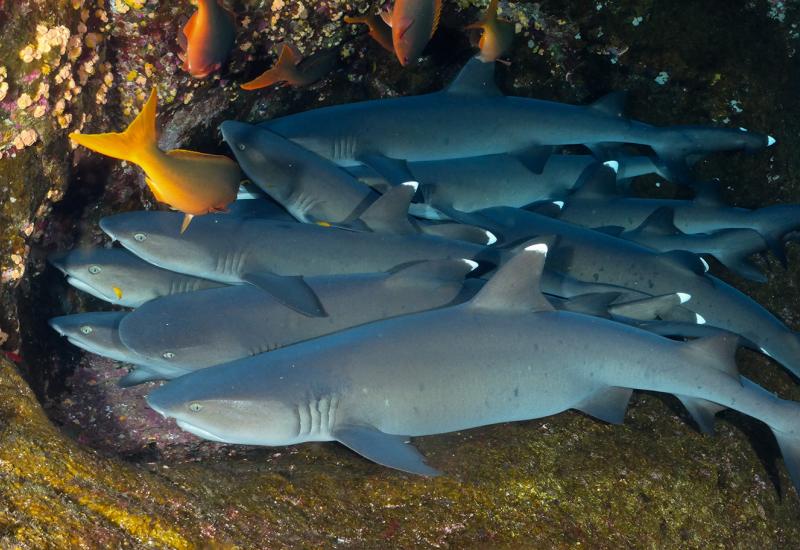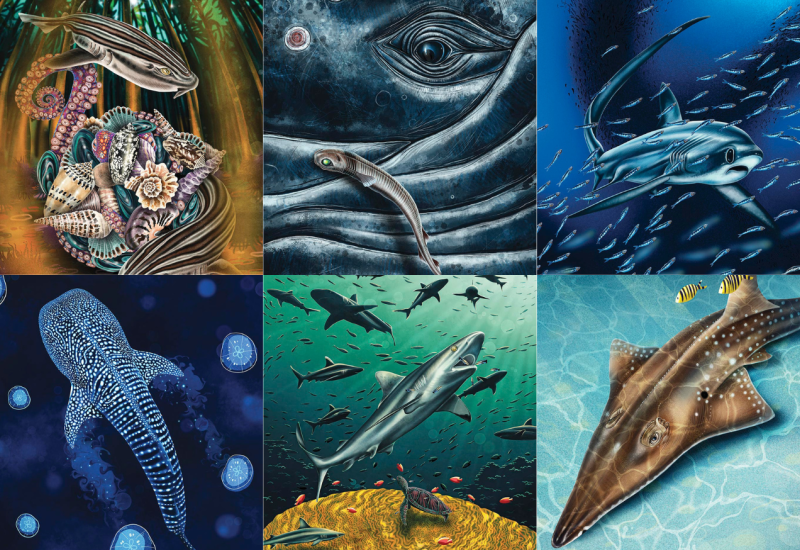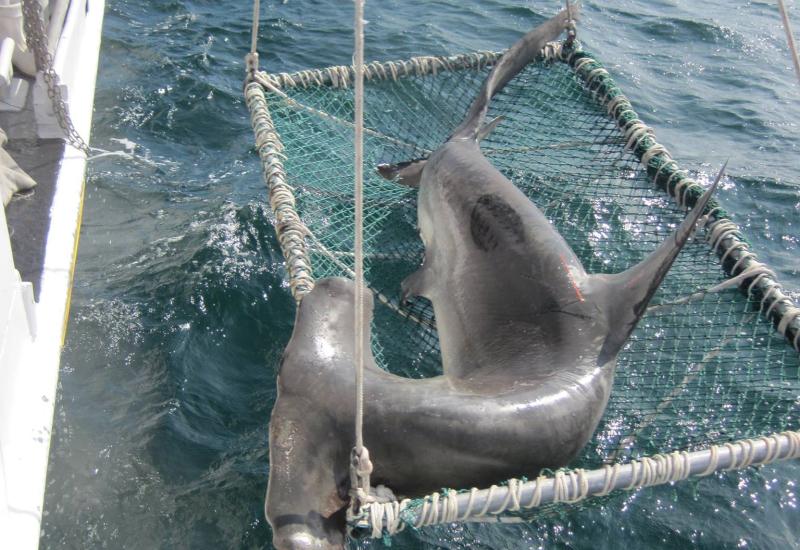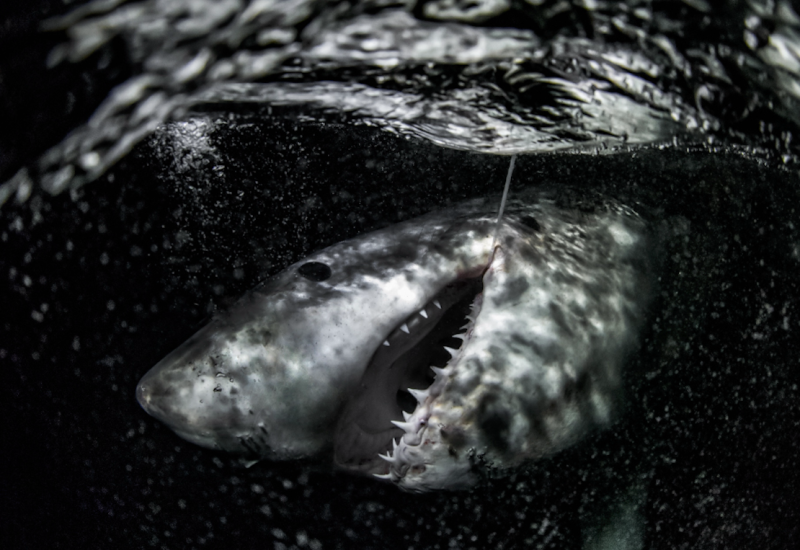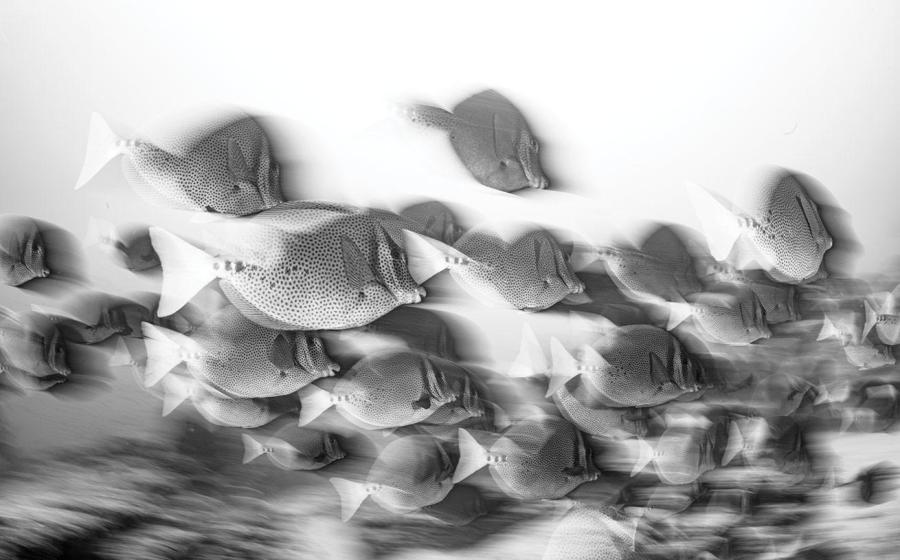How Should You Deal With an Aggressive Shark When Scuba Diving?
In this edition of Ask a Marine Biologist, Dr. David Shiffman answers a question about safely interacting with wild predators.
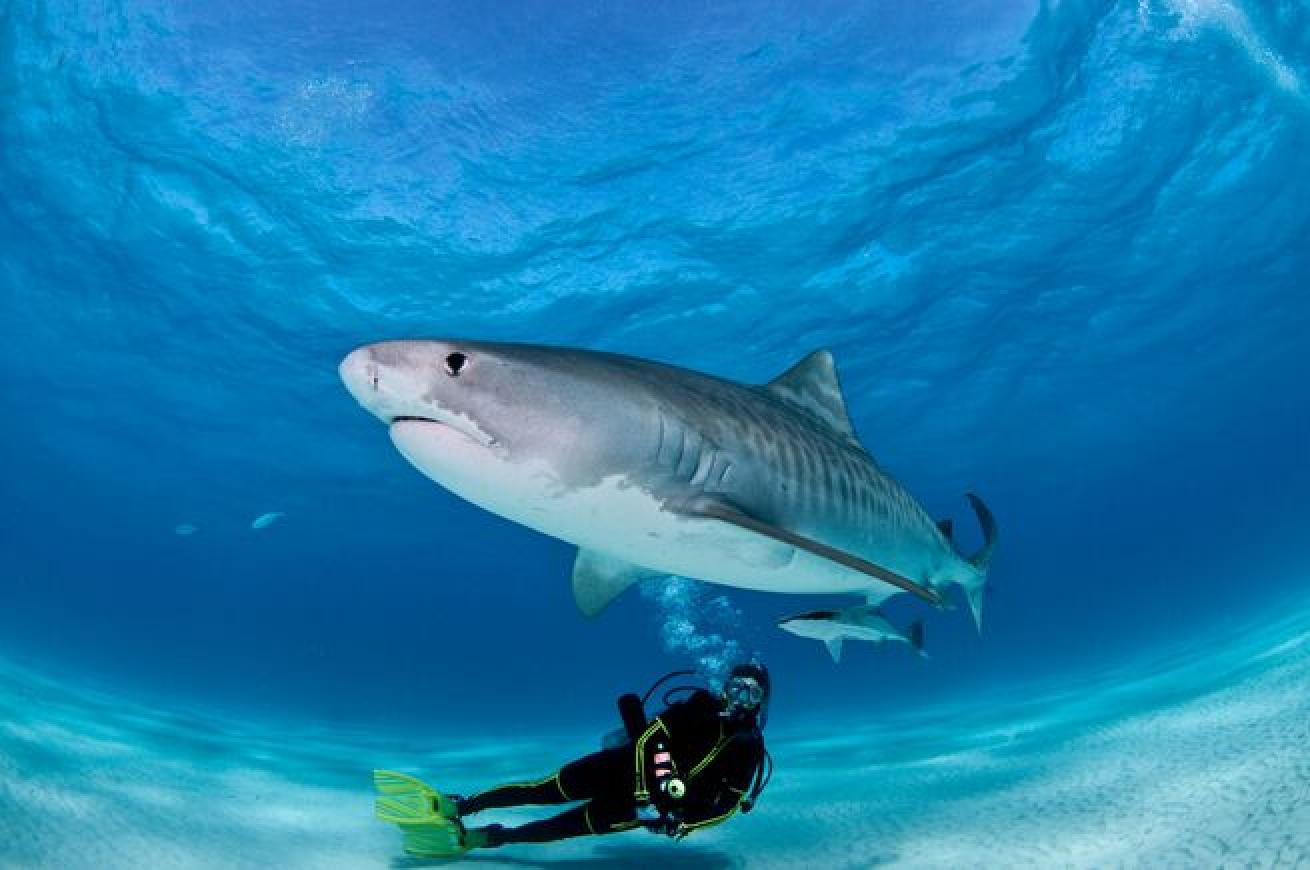
Fiona Ayerst/ShutterstockA tiger shark glides over the top of a scuba diver.
Question: How can you tell if a shark is getting agitated or aggressive on a dive, and if that happens, what should you do? —Tara H., Texas
Answer: There are two important questions here, and I’ll address them both in detail, but with issues of diver safety I don’t want to bury the lede because I don’t want to risk having to bury the diver. In general, if you are ever at all uncertain about whether a situation involving a wild animal is safe, you should leave as quickly as you can, taking care not to ascend too quickly and to protect yourself from a potentially dangerous wild animal on your way back to the boat. Now, let’s address both of these questions in a little more detail.
How can you tell if a shark is behaving aggressively?
There are some telltale signs that a shark is behaving unusually aggressively. We think they do this not because they consider us food, but because they feel threatened by us, or feel we are competition for food. I should note that this isn’t a checklist. If you think a shark might be doing any of these behaviors, you should be on alert; you don’t need to wait for the shark to do all of them. And if you’re not sure at all, assume the shark is telling you to back off. Every species behaves differently, and even individuals within a species can have noticeably different behaviors. OK, with those caveats out of the way, and assuming that no one is making any life-or-death decisions based on this column*, let’s briefly review the types of aggressive behavior that a shark may exhibit.
There are actually about 30 different agonistic behaviors that have been documented in sharks, reviewed in this excellent paper that includes numerous diagrams showing what they look like and links to videos documenting many of them. With most of these behaviors, you’d easily and quickly notice that the shark is behaving strangely, which is kind of the point: “Get away from me now” signals are not meant to be subtle and difficult to understand.
According to the experts in negative shark-human interactions at the University of Florida, some of the most common agonistic displays include sharks hunching their backs (if you’ve ever seen an angry cat, you get the idea), bending its pectoral fins (the ones at the side, kind of where you’d think arms would be) sharply downward, repeatedly rushing at the diver, or swimming weirdly (rapidly up and down, rapidly side to side in a zigzag motion). Rapidly opening and closing the mouth has also been documented (see the second half of the video here. As I said, these behaviors are not subtle. And if you think you might see any of them, you should assume that the shark is unhappy with your presence and react accordingly. Which means…
Related Reading: Do Dive Lights Harm Manta Rays?
What should you do if a shark is acting aggressively toward you?
If you are in an unsafe situation (or even if you think you might be), you should leave that situation as quickly and safely as possible. Sometimes, just backing away slowly is enough to convince the shark that you got the message and are no longer a possible threat, which should result in the shark resuming its normal behavior or leaving the area. If that doesn’t happen, you should get out of the water. Don’t ascend too quickly unless it’s absolutely a medical emergency—the bends don’t care why you avoided your safety stop—but don’t dawdle.
While getting away from a shark that’s behaving aggressively, you should not turn your back on that shark—keep your eyes on it at all times. If you have a camera or something, it might be helpful to keep that in between you and the shark, nudging the shark with it if the shark gets too close. In a pinch, you can use one of your fins for this.
Shark bites are extremely rare, and bites on scuba divers are rare even among shark bites overall. Sharks are not mindless killing machines that will eat your whole family if you dip your toe in the water, but nor are they cute and cuddly animals that just need hugs. Many shark species that divers interact with are large wild predators capable of causing harm to humans. You shouldn’t be terrified of sharks, but you should give them respect and a healthy distance. You should not chase them, you should not interfere with their eating, and for crying out loud, don’t grab or ride them. And if a shark uses one of these agonistic displays to tell you to leave the area, you should very strongly consider doing exactly that.
I’m not the only one being paranoid here. That paper by R. Aidan Martin that reviews agonistic displays contains a disclaimer that I’ve never seen in a published scientific paper before, and I’ve read literally thousands of papers about sharks and shark behavior: “Sharks are potentially dangerous animals. While the author offers his opinion on actions that may make encounters with sharks less dangerous, neither he nor Taylor & Francis accept any responsibility whatsoever for the safety of those who choose to interact with sharks, regardless of whether or not they follow the author's safety suggestions. Those who seek out interactions with sharks do so entirely at their own risk.”
Ask a Marine Biologist is a biweekly column where Dr. David Shiffman answers your questions about the underwater world. Topics are chosen from reader-submitted queries as well as data from common internet searches. If you have a question you’d like answered in a future Ask a Marine Biologist column, or if you have a question about the answer given in this column, email Shiffman at [email protected] with subject line “Ask a marine biologist.”

Courtesy David ShiffmanDavid Shiffman
Dr. David Shiffman is a marine conservation biologist specializing in the ecology and conservation of sharks. An award-winning public science educator, David has spoken to thousands of people around the world about marine biology and conservation and has bylines with the Washington Post, Scientific American, New Scientist, Gizmodo and more. Follow him on Twitter, Facebook and Instagram, where he’s always happy to answer any questions about sharks.

